Executive summary
The military conflict between the Saudi-led coalition (SLC) and Yemeni Houthi rebels has been ongoing since March 2015. Spillover from the conflict in Yemen has led the Saudi Arabian government to enact the Emergency Security Control of Air Traffic (ESCAT) covering the airspace over the southwest provinces of Asir, Jizan and Najran along the Yemeni border in FIR Jeddah (OEJD). Houthi rebels have the capability and intent to conduct surface-to-surface missile (SSM) and drone launches not only against targets in the ESCAT area but also deep into the interior of the kingdom. The SLC has air and air-defence assets deployed across Saudi Arabia to defend main urban centres of the kingdom. While the SLC has been mostly successful in thwarting Houthi attacks and deconflicting air-defence operations with civilian flights, such activity poses an enduring risk to all forms of aviation activity within FIR Jeddah (OEJD).
Background
Osprey data indicates Saudi Arabia has shot down over 350 Houthi SSMs and drones over its territory since the start of 2019, predominantly within the ESCAT area. Separately, since 2016, Osprey has documented over 45 drone, cruise missile and/or SSM attack claims by the Houthis and/or interdictions by SLC air and air-defence forces deep into the interior of the kingdom, including over 20 during 2021 alone. Reporting from January indicates that Iran has provided the Houthis with Shahed-136 drones with an approximate range of 2,000-2,200km (1,240-1,370 miles). Below is a summary of reported attacks deep into the interior of Saudi Arabia and the wider region during 2021:
- 23 January: Drone shot down by SLC over Riyadh.
- 26 January: Drone reportedly shot down by SLC over Riyadh;
- 15 February: Houthis claimed cruise missile attack on Jeddah;
- 27 February: SSM shot down by SLC over Riyadh;
- 4 March: Houthis claimed cruise missile attack on Jeddah;
- 7 March: Indications of Houthi missile/drone attacks on Jeddah;
- 7 March: SSM and drone shot down by SLC over Dammam;
- 9 March: SSM and drone reportedly shot down by SLC over Yanbu;
- 19 March: SLC confirmed Houthi drone attack on Riyadh;
- 25 March: Houthis claimed drone and SSM attacks on Ras Tanura, Rabag, Yanbu & Dammam;
- 1 April: Houthis claimed drone attacks on Riyadh;
- 8 April: Indications of Houthi drone and/or missile attack on Rabag;
- 11-12 April: Houthis claimed drone and SSM attacks on Jeddah & Jubail;
- 30 April: SLC stated it shot down a “hostile air target” over Jeddah;
- 19 June: Indications that a Houthi SSM was shot down over Taif;
- 30 July: Iranian-made Shahed-136 drone reportedly launched from Yemen hit an Israeli-linked commercial ship off the coast of Oman;
- 4 Sep: Houthis claimed SSM & drone attacks on Jeddah & Dammam;
The threat to air operations over Saudi Arabia is not confined to SSM and drones launched from Yemen. US and Saudi government reporting indicate several weaponised drone attacks by Iraq-based, Iranian-backed militant groups (IBMGs) have targeted Riyadh during 2021. Two similar IBMG attacks into Saudi Arabia via drones also reportedly occurred in May and September of 2019. On 14 September 2019, large-scale attacks targeted two major oil facilities in Eastern Province of Saudi Arabia involving 18 drones and seven cruise missiles. Despite the Houthi claim of responsibility for these strikes, they did not emanate from Yemen, and the missiles and drones were reportedly launched from Iran. The SSM and drone launches from Iraq and Iran create two separate fronts facing SLC air defences, adding further complexity to deconfliction with civil aviation.
SSM and drone attacks against the southwest provinces in Saudi Arabia dropped significantly following peaks in August-September 2019 and remained at consistent levels through 2020. However, there has been a sustained increase in such attacks and downings since late January of this year. Based on the significant increase of drone and SSM strikes and shoot-downs both inside the southwest provinces (Asir, Jizan & Najran) and over multiple areas deep inside the interior of the kingdom in early 2021, Osprey assesses there remains an increased likelihood of further deterioration of the airspace operating environment over Saudi Arabia in the months ahead.
Impact on Aviation Operations over Saudi Arabia
The southwest provinces of Asir, Jizan and Najran are located in the ESCAT area enacted by the Saudi General Authority of Civil Aviation (GACA) (OEJD AIP SUP 08/21). There are “special requirements” in FIR Jeddah (OEJD) for all flights, issued by GACA (OEJD AIP SUP 07/21 – Attachment 2). The European Union Aviation Safety Agency as well as Canada, France and Germany have issued guidance to operators within the past year regarding FIR Jeddah (OEJD).
Houthi drone and SSM launches routinely target civilian airports and/or disrupt flight operations in the southwest of the kingdom, including at Abha (OEAB/AHB), Jizan (OEGN/GIZ) and Najran (OENG/EAM). On multiple occasions during 2021, flights using Jeddah (OEJN/JED), Riyadh (OERK/RUH) and – to a lesser extent – Dammam (OEDF/DMM) airports and overflying those areas have been severely disrupted for multi-hour periods with no reason given by the Saudi authorities. In addition, flights have been diverted from Jeddah to Medina Airport (OEMA/MED) and from Riyadh to Dammam Airport (OEDF/DMM) on several occasions in 2021 when launches deep into the Saudi interior have occurred.
In the event of SSM and/or drone launches into Saudi Arabia, including towards Riyadh and Jeddah, the Saudi authorities are likely to respond by holding all inbound flights or diverting them to other airports, holding flights yet to depart for these airports at their points of origin, as well as suspending all departures at affected airports. Overflights of these areas will also be rerouted. Whilst the amount of time between these closures and the resumption of activity can vary, previous incidents have resulted in the cessation of civilian air traffic for periods of hours. Once the restrictions are lifted, landings are also likely to be restricted for an additional length of time whilst the aircraft in holding patterns are permitted to land and departure backlogs are cleared.
Threat to Aviation Operations over Saudi Arabia
SSM and drone attacks against airports and airbases in Saudi Arabia pose a direct threat to civil aviation both in the southwest of the kingdom as well as deep into the interior. The Yemeni Houthis and Iraqi IBMGs are assessed to have a variety of SSMs and military-grade weaponised drones within their inventory. On 8 October, two Houthi drones were launched targeting Jizan Airport and the SLC shot one down while the other hit the installation, resulting in injuries to 10 civilians and minor material damages. On 10 February and 31 August, Houthi drone attacks on Abha Airport damaged civilian airliners parked at the installation. In addition, Houthi drone casualty-causing attacks targeting the car park in the land-side area of Abha Airport occurred on in 2019 on 23 June as well as 1 July. During 2019, on 12 June and 28 August, cruise missile attacks by the Houthis hit Abha Airport which caused structural damage to the terminal. Aircraft on the ground at installations – both military and civilian – face a credible risk of being damaged due to such attacks.
Osprey analysis highlights that while drones over the southwest provinces are mainly downed via SLC fighter jet air-to-air engagements, the shoot-down events deep into Saudi Arabia are likely occurring via US-made MIM-104 Patriot conventional surface-to-air missile (SAM) systems. The Patriot is capable up to FL800 and out to 160km (100 miles). Saudi Arabia has Patriots deployed in its southwest provinces along the Yemeni border and in main urban centres of the country. At various points since 2015, the SLC has deployed Patriot systems within Yemen for strategic air-defence coverage of western areas of Yemeni airspace. The conventional SAM use is highly concerning, especially in the downing of SSMs, as deconflicting such activity from civilian flights must be done in a very short amount of time compared to engaging drones, which has a longer lead time.
During 2019-2020, the US military deployed additional conventional SAM systems to locations in the Gulf region, including Saudi Arabia; however, recent commercial satellite imagery indicates that the US has withdrawn its Patriot batteries and a Terminal High Altitude Area Defense (THAAD) battery from Prince Sultan Air Base (OEPS/AKH), located southwest of Riyadh. Patriot and THAAD systems are capable up to FL800 and out to 160km (100 miles). This development is concerning as it indicates SLC air defences will be required to maintain coverage of the entirety of FIR Jeddah (OEJD) without supplemental conventional SAM support from the US military.
As evidenced by the 30 July incident above, acquisition of Shahed-136 drones from Iran indicates that Houthi rebels now have the capability to target all of Saudi Arabia, the UAE and even Israel, as well as areas across the Gulf region. Media reporting from January indicates that Israel has deployed Patriot and Israeli-made Iron Dome conventional SAM systems to the Red Sea city of Eilat due to “threats of attack from Yemen” via drones such as the Shahed-136. There is a precedent for Houthi drone attacks well outside of Yemen against non-Saudi targets as on 26 July 2018, the rebels reportedly conducted a Samad-3 drone attack targeting Abu Dhabi International Airport (OMAA/AUH) in the UAE. The UAE also maintains a Patriot capability deployed within its borders. Each of these military entities also has combat aircraft capable well above FL260 deployed at locations in the Middle East region for air-defence purposes.
Outlook
Unannounced SSM and drone launches that transit airspace used by civilian aircraft pose a latent threat to operations at all altitudes. The country has a history of not issuing adequate notice of activities in its airspace that could affect flight safety. Multiple safety-of-flight concerns emanate from a situation in which an SSM or drone malfunctions during the boost, mid-course, or terminal phases of flight. Such an event would cause the missile or drone to fly an unplanned trajectory and altitude profile, which could expose overflying aircraft to mid-air collision, route diversion and/or debris splashdown issues.
Saudi Arabia has an aggressive air intercept and shoot-down policy that allows air and air-defence forces to intercept and disable aerial targets violating airspace regulations. Military air and air-defence assets are routinely employed to down aerial targets under the auspices of the policy. While legal civil aviation flights are unlikely to be directly targeted, there remains a latent but credible risk of misidentification and interception by military air and air-defence assets.
Continued SSM and additional drone launches by the Houthis and associated intercepts via Saudi military conventional SAM engagement, as well as fighter jet air-to-air weapon employment, are likely to occur multiple times weekly over the ESCAT area of Saudi Arabia for the foreseeable future. In addition, at least monthly SSM or drone attacks and associated intercepts near Riyadh or over main urban centres located deep within the Saudi interior are possible until a resolution to the Yemen conflict is reached. Osprey recommends deferring flights over the entirety of FIR Jeddah (OEJD), including the ESCAT area, subject to an operation-specific risk assessment. Should flights be undertaken, Osprey recommends the following risk mitigation measures at a minimum in the airspace:
- Systemic risk assessment of each flight with automated threat intelligence integration;
- Security and operational risk-based identification of pre-planned divert airports;
- Defer diverting from flight plan except for ATC instruction or life-threatening situations;
- Reliable and redundant communications with an established communications plan;
- Fully coordinated and robust emergency response plan supplemented by asset tracking.
Visit our Case Study: Houthi Drone and Missile attacks in Saudi Arabia for further information on the situation.








